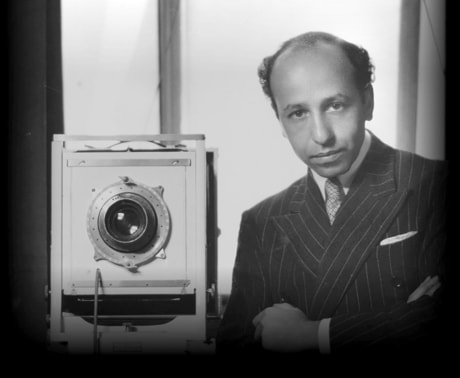OTTAWA — The photographs of Yousef Karsh are technical marvels — exquisitely lit, sublimely detailed, masterfully printed.
But the man himself transformed an Armenian immigrant into ‘Karsh of Ottawa’, a raconteur and photographic virtuoso through whose lenses generations of world leaders, celebrities sought immortality.
Personable, engaging and curious, Karsh knew how to draw out his subjects and reveal through his predominantly black-and-white images something of their souls.
Ottawa’s science-and-tech museum may seem a strange place to celebrate a portrait master’s 100th birthday, but this is an exhibition with a difference.
Part of the citywide Festival Karsh (www.festivalkarsh.ca), “Karsh: Image Maker” follows the process surrounding what the master described as the elusive “moment of truth.”
There are his impressive 8x10 cameras, the huge enlarger he and his master printer used, as well as displays showing their printing processes and techniques.
There is, of course, a collection of his exquisite prints reflecting the hope of Nelson Mandela, the beauty of Audrey Hepburn, the vision of Fidel Castro, the promise of Martin Luther King, the depth of Albert Schweitzer, the intensity of Glenn Gould and, most famously, the bulldog defiance of Winston Churchill.
But perhaps the most revealing element of the exhibition is a series of small prints of Karsh himself, at work and at play. There are pictures with his mother, at work in the studio, on location and with a series of personalities from politicians and actors to wildlife photographer Ansel Adams and puppeteer Jim Henson.
They show a dapper man humble and joyful in his work — loved, trusted, respected, totally at ease with his tools and his subjects.
Karsh usually worked away from his large-format camera, a “remote” in his hand as he conversed with his subjects, asking questions, exchanging views, engaging them as he almost passively triggered the shutter.
An assistant would manipulate the lights at his direction. The 8x10 and 5x7 cameras he most used held only one negative at a time. Each image was a carefully chosen moment with profound undertones.
Churchill’s scowl, it is well known, was elicited when Karsh snapped the cherished cigar from the British prime minister’s lips during a two-minute session on Parliament Hill on Dec. 30, 1941.
“The Churchillian scowl deepened, the head was thrust forward belligerently, and the hand placed on the hip in an attitude of anger,” Karsh wrote in Faces of Our Time, his 10th of 15 books.
The image captured Churchill and the England of the time perfectly — defiant and unconquerable.
It became one of the most reproduced photographs ever taken, used on Churchill commemorative stamps in many countries, including Canada, Britain, Australia, New Zealand and the United States.
There were many other memorable encounters over the years.
Karsh loved people, and could hold his own with the best of them.
His sessions were events in themselves and became renowned for their repartee. An engaging, intelligent personality, he had a gift for disarming his subjects, for dismantling the walls that people erect between themselves and the camera — exposing, it seemed at his best times, their very souls.
“He had a great ability to get right to the heart of the matter and be able to put it into a photograph,” his late brother, Malak Karsh, a renowned architectural and landscape photographer, once said of him.
Karsh was polite and curious. He asked questions, elicited answers, reflections, profound moods. His sessions became known as “visits” and his subjects gave of themselves “with love and respect,” said his brother.
“People knew they had a master with them and they appreciated that opportunity. They gave him the opportunity to find out what he needed to know about them so he could render them in the best way possible.”
Combined with his mastery of light and composition, it made a formidable portraitist — a modern-day master, working most often in shades of grey.
